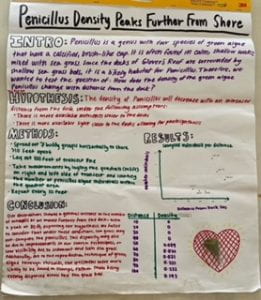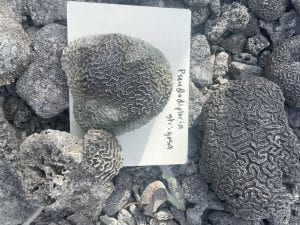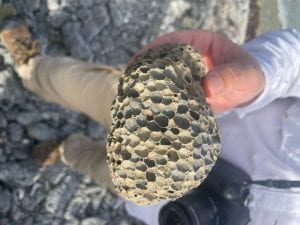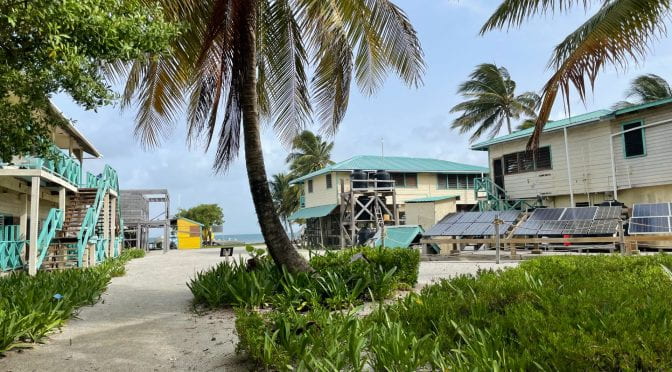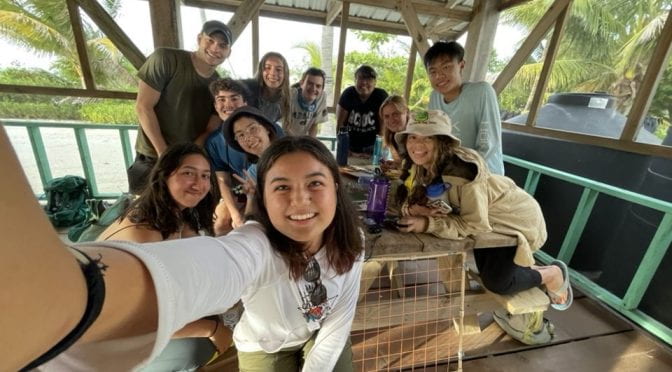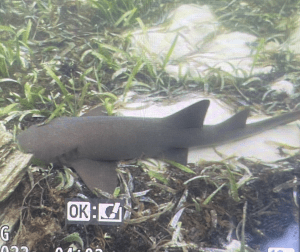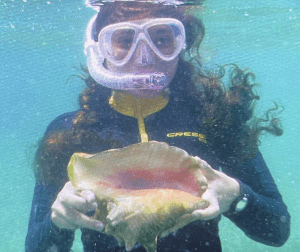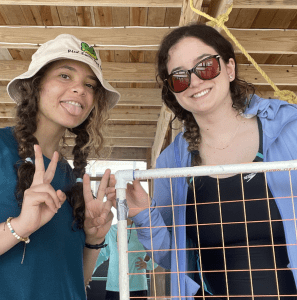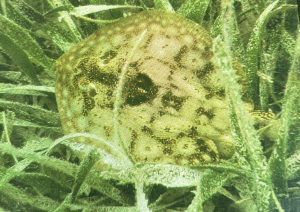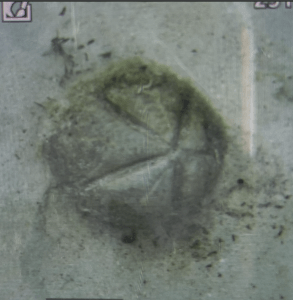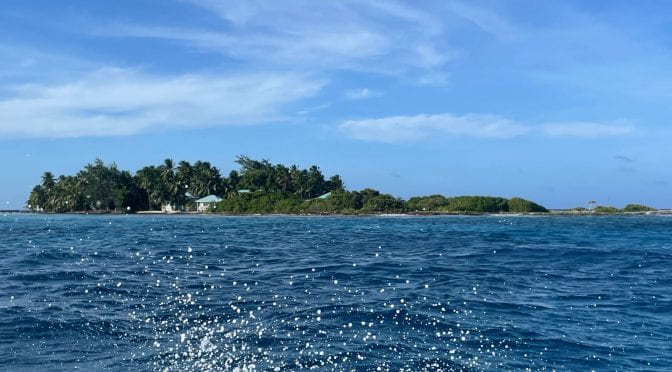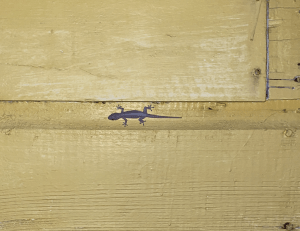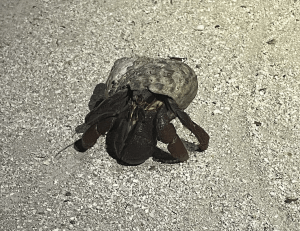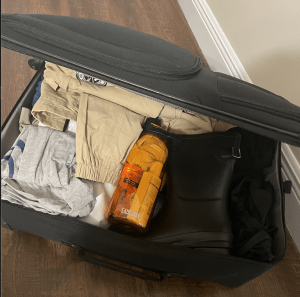Hi all, it’s Faith with Day 3 updates from the 2022 Belize trip!!!
Today we started off with a new activity where we learned how to use the quadrats and transect tapes. On the reefs, quadrats are used for making standardized measurements while fighting the wave currents. You can count them using the individual squares or their cross-sections!!! We took on two tasks, one as a duo and one as a whole group, that challenged us to use quadrats and transect tapes to answer a scientific question.
As a pair, Maegan and I tried to measure the heights and widths of young palms (we called them coconut palms because they still grow out of coconuts) on the Glover’s island, but Dr. Correa told us to change it, so we ended up measuring the volumes of two random coconut palms. We used the transect tape as a tool to decrease the bias in our samples, and we used the qaudrats squares as a unit of measurement.
After this test-run, our entire group created a scientific question, hypothesis, and procedure for collecting data. Here are the details:
Our question was, “How does the density of the green algae Penicillium change with distance from the dock?” Our hypothesis was that the density decreased because “algae are light dependent and nutrient depended,” and we *assumed* that there was more light and nutrients towards the shore. For our actual experiment, our pairs lined up horizontally at the doc, and then layed out 100ft of transect tape in a line straight ahead of us. Then, every 10 feet we counted the number of Penicillium in 1 quadrats range on either side of the transect tape. Our findings actually conflicted with our hypothesis because the distance with the highest Penicillium density was actually 80ft away! We concluded that our hypothesis may be wrong because 1) seagrass was outcompeteing the algae in shallower waters, 2) the waters by the shore might not be more nutrient rich or provide more light, and 3) we may have gotten better at finding the algae the more we practiced (therefore reporting more at deeper depths). However, we kinda ruled out #3 because Maegan and I did the experiment backwards, and even though we reported the algae from 100ft to 0 ft, our data aligned with the trend (we found 6 Penicillium at 80ft. which was our highest density). Another group also did a backwards collection and had similar data. To finish off this trial research, the professors made us present it just like I said it to you now!!! So, look below for pictures of our beautiful poster!
Then data collection dive was challenging in many ways. I found out how difficult data collection is because of the currents and carrying materials. Because of this, I ended up leaving my camera behind, so of course, the worst thing happened– 2 echinoderms showed up! First, Professor Correa brought me a Oreaster reticulatus more commonly known as a cushion sea star. I was not sure where she found him, but I assume it was in the sea grass where we were collecting data. I had a difficult time identifying this star because it had pillow-star depth, but the spines were the same color as the bodice and the legs lacked a prominent “fused” appearance. Most guides show pictures where their spines are lighter than the bodice color and their legs are very fused. Nevertheless, I got to hold him and feel his spiny tube feet prick my fingers. Because I didn’t have my camera, someone else took my photo, so hopefully I’ll be able to get the picture and upload it for the next blog!
Next, I saw a West Indian Sea Egg (Tripneustes ventricosus) just sitting in the sea grass, but Ruth, our marine safety guide, picked him up before I could. So, alas, I did not get to name him “Fluffy,” and I cannot cross this off of my goals list! Anyways, we got to see the interesting sea urchin suction mouths because he suctioned to us while we held him. Shortly after seeing him, messing around with plastic-bag jellyfish, and trying to grab upside-down jellyfish, we went inside for lunch.
For our last activity of the day, Dr. Correa brought us to “the best place on Earth” where we identified washed-up coral skeletons based on their coralite and polyp structures. It was a very informative talk, but I don’t think I can cover it all here. You’ll just have to visit the coral graveyard yourself with a coral guidebook! I did go a littttttllllleeeee conch crazy and collected every conch that had color in it (about 5 or so). I also found a walking stick!!!
Till tomorrow!
Quotes of the Day:
“This place is amazing!!! *points at coral* And this is Agaricia”
“Signing off in another language would be a very suburban mom thing to do, ‘like I learned a few new words today’ would be too ‘mom’ of me”
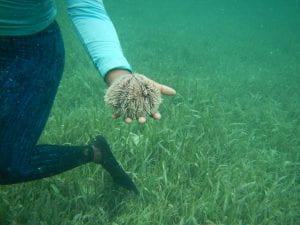
Tripneustes ventricosus
